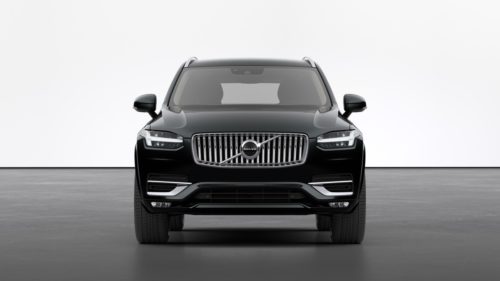Designing Sounds For Road Safety In Electric Vehicles
August 29, 2022
Electric cars are on the rise and soon we will see autonomous cars as a normal part of our transportation landscape. These new cars hardly make any sound themselves, therefore audio has to be tailor-made by sound designers, which opens up a myriad of possibilities. With this change also comes a big responsibility for sound designers, as we now have the opportunity to shape and sculpt the future of what tomorrow’s traffic should sound like, while also maintaining a safe environment for both drivers and pedestrians as electric vehicles are 37% more likely to cause accidents involving pedestrians and 57% more likely with cyclists.
Today we’ll take a look at how we create road safety sounds for electric vehicles, what safety measures we should keep in mind and further improve on, as well as the potential risk of auditory cacophony on the streets.
Let’s get into it!
“Most of the task of driving is focused on the visual aspect, therefore the more we can avoid the driver taking eyes off the road the better.”

How To Use Sounds In Electric Vehicles
One of the most important (and discussed) topics regarding electric vehicles is the question of road safety. As electric vehicles are almost completely silent when going under a certain speed threshold (around 20-30km per hour), audio elements need to be introduced, in order to keep the roads safe. When going over this threshold, the wind resistance and the tires of the car produce enough sound to be safe for pedestrians. That is why it is required in some areas, like Europe and Australia, to emit some sort of external sound when going below this speed threshold. As pedestrians, we have grown accustomed to listening for vehicles and engine sounds when crossing the road or walking in a parking lot. Therefore, removing these sounds poses a huge safety risk for pedestrians, as a vehicle could be approaching you without you having any awareness of its presence.
This is especially important in relation to the visually impaired, elderly, and children, who might not be aware that an electric vehicle is approaching around the corner or driving behind them. It’s also important for the general unattentive public, who might be looking at their phones when crossing the road, or animals in the wild that will use sound to navigate away from roads and other high-density traffic areas.
External sounds also mean engine sounds, which play a huge part in road safety. Engine sound generally needs to be in the range of 500 Hz to 4000 Hz as this corresponds to frequencies of human speech (something we are highly attuned to as humans). For example, Nissan have been utilizing two particular frequencies in their engine sounds; 2500 Hz and 800 Hz. 2500 Hz is chosen because it cuts through other sounds in the environment since the frequency is high enough to not be heard many other places, thereby making it easier to notice and therefore safer to navigate around. 800 Hz tends to be easier for older people to hear. Wisely, they avoid 1000 Hz, which is where most of the noise that we as humans hear is located. If the electric vehicle emits sound within this range of 500 Hz to 4000 Hz, it makes the pedestrian much more likely to quickly and accurately react to it.
One of the reasons why sound is so effective is because we react faster with our ears than with our eyes. Most of the task of driving is focused on the visual aspect. Therefore, the more that we can avoid the driver taking their eyes off the road the better. Sound is very effective, as we react to it faster than visual cues, plus it also avoids distracting the driver in their primary visual task of driving, whilst still being able to understand secondary processes, like listening to an alarm sound.
Another important point about engines is the possibility of personal customization. While many have argued that electric engines will enable us to choose exactly the engine sound we want, that is only partially true from a safety point of view. A critical thing to consider is that people still have to interpret the sound as an engine. If bird sounds or other non-vehicle-related sounds were chosen, then pedestrians wouldn’t interpret the sound as coming from a vehicle and would therefore be more prone to putting themselves in dangerous situations.
As a sound designer, it is also important to control and guide user emotions as they are driving cars. As we already know, music and sound are hugely effective in making the listener feel a certain way. Therefore, we as sound designers have a responsibility of not making an engine sound that makes the driver want to drive faster, becoming more dangerous. This also feeds into the problem with personal customization, as drivers might change the engine sound to something more aggressive and pulsating. Pulsating sounds make us want to go faster, especially when the pulsating increases in speed as the car accelerates. Drivers also rely on engine sounds to get a sense of their traveling speed, therefore engine sounds still need to present an accurate representation of speed to ensure that drivers are traveling at safe speeds.
One last thing to remember regarding safety, is the actual build of the electric car (thickness, materials, curves etc.) and the placement of the speakers within this build, as this will affect the sound quality and frequency response in many ways. Therefore, it is essential to have sound design in mind from the very get-go.
“Since more and more electric vehicles utilize spatial audio, with speakers placed around the driver, it is possible to communicate to the driver exactly where a certain incident is taking place.”

Utilizing Directionality
Ideally, our focus should be fully focused on the road at all times. This is where sound comes in very handy, as we still have our ears to pick up surrounding information about how safe we and others are. Hearing is a peripheral sense that is very accurate at locating sounds from different directions. Because of this, drivers often rely on their ears when driving. Since more and more electric vehicles utilize spatial audio, with speakers placed everywhere around the driver, it is possible to communicate to the driver exactly where a certain issue is taking place.
Sound is extremely effective at grabbing our attention, thereby making it a perfect modality to use when signaling that something dangerous is taking place. Our auditory system is very good at filtering out unimportant sounds, making it easy for us to focus on more urgent ones – even in a very noisy environment.
Imagine, for example, a driver attempting to turn right, when a cyclist is in one of the driver’s blind spots. The car would play a warning sound exactly on the 3D azimuth (the horizontal plane) location of the cyclist, allowing the driver to quickly stop, adjust and know exactly where the potential danger is located. The same goes for the cyclist outside of the car, where the car could emit a sound to the cyclist, letting him know that he is in a blind spot of the vehicle.
By placing speakers around the car in different positions, this allows the car to send out an auditory warning in different directions depending on the situation. This could also be done with the engine sound itself, only emitting the sound to pedestrians in close or dangerous proximity to the car. In theory, this allows the car to create a silent soundscape for the city while also providing road safety where needed.
Other ways that sounds could be used to increase safety include collision warnings (and where these collisions are about to take place), changing the panning of engine sounds (front to back) to represent how fast the driver is going or degrading the audio quality to signal that the driver is going too fast. Sounds could be used for lane guidance, playing sounds to the left and right of the driver when getting too close to a lane. Also, providing feedback on when a turn should be made and when it is safe to do so – again making sure that eyes are always on the road.
“In an ideal world, most users and pedestrians would not even notice the sounds of the electric vehicles, yet they’ll still give enough information to ensure road safety along with a more silent and pleasant soundscape for the city.”

Cacophony Waiting To Happen?
When designing sounds for a car, it is important to have good design practices set in place, as sounds may interfere with each other or be masked by the surrounding environment. Therefore, it is important to make sure that elements such as frequency, location, and type of sound are taken into consideration. When building the communication landscape of the vehicle, it is extremely important to make sure that the driver can hear the sounds at all times. Also, making sure that there is a clear priority system between sounds will make it easier for the listener to interpret which sounds they should react to immediately, simultaneously, or just observe. For example, warning sounds could be louder, more aggressive and utilize different tones than the turn signal sounds and so forth, with the goal of having each category of sound carve out their own space in the overall soundscape.
Because noise pollution has become such a big problem in cities (linked with heart diseases, stress and early death), and also one of the greatest threats to wildlife, city planners are looking into ways to reduce it, with electric vehicles being one of the main contributors.
One of the main concerns with electric vehicles, from a sound perspective, is that each vehicle manufacturer wants their cars to sound different from the competition. Why is this a problem? Because suddenly there’s a risk of each vehicle sounding different, playing sounds in various musical keys, and with that, the chance of total auditory cacophony waiting to happen.
In theory, there are some ways this could be limited, although unlikely. As Hans Zimmer, who designed the new sounds for the electric BMW vehicles, said in regards to cacophony; “One of the things I’m going to try to bring up in the future is with all the other sound designers from all the other companies” & “Is there a way we can find a harmonious way of doing it?”.
One way would be to look at the unique chance we finally have to take control of the soundscape of the cities. Governing authorities could make regulations ensuring that complementary sounds are used, as well as keys that are harmonious with each other. Of course, such laws are sure to rile up automakers as it has the chance to comprise originality as well as money-making opportunities.
In an ideal world, most users and pedestrians would not even notice the sounds of the electric vehicles, yet they would still give enough information to ensure road safety along with a more silent and pleasant soundscape for the city.



